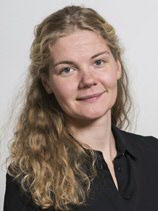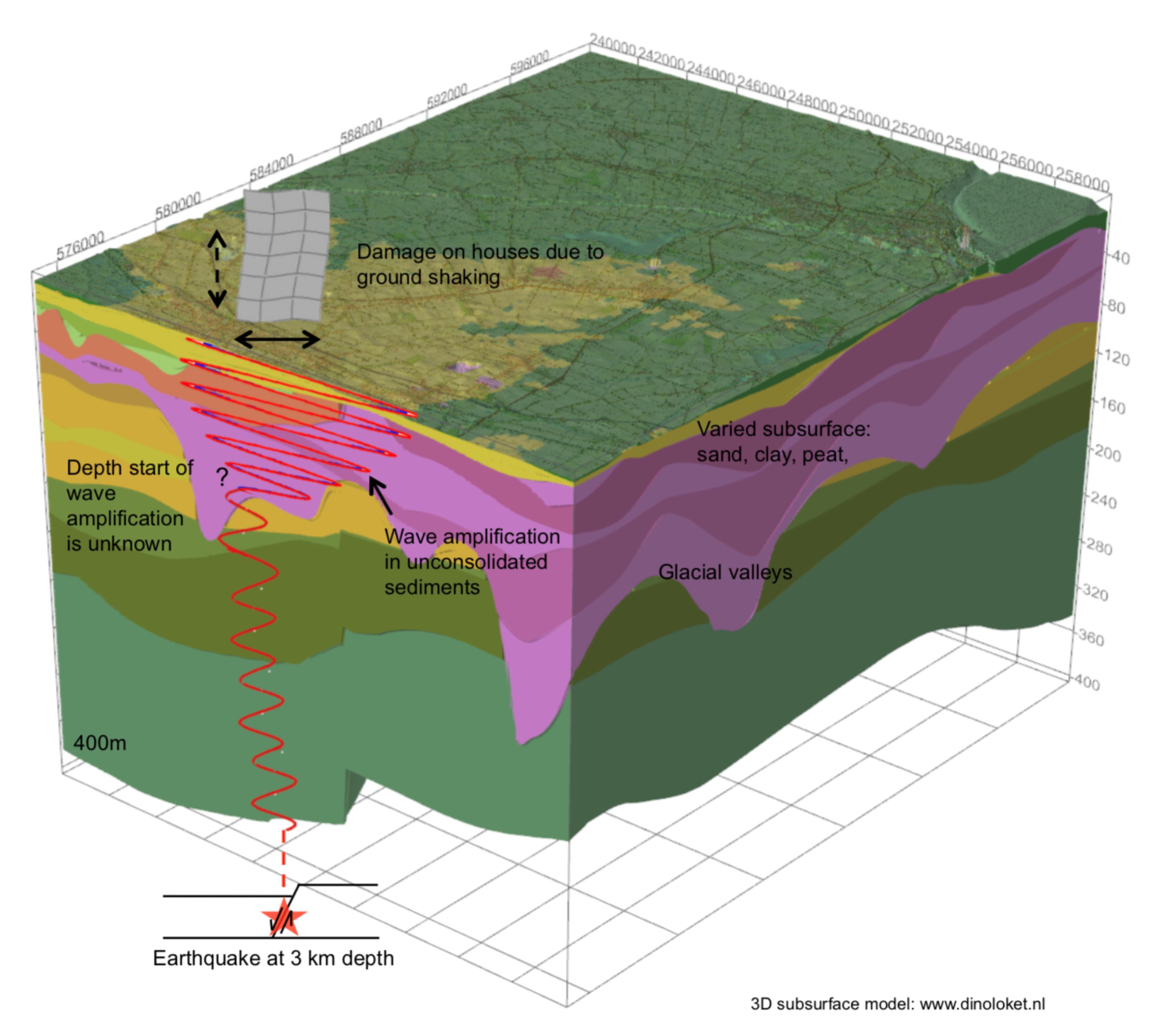PhD project: Characterisation of the effects of shallow soil composition on near-surface amplification of seismic waves | Janneke van Ginkel

Summary
It is well known that shallow subsurface lithology variations can strongly influence the degree of damage on buildings from earthquake shaking. Additionally, the seismic wave amplitudes increase when travelling towards the free surface and respond in a non-linear way when encountering soft sediments. For earthquake engineering purposes, site characterisation is key for seismic hazard analysis and risk mitigation but the properties in the subsurface are often a challenge to obtain. Over the last decades, increasing number of induced seismic events triggered the research on the lower magnitude earthquakes and site response in the Netherlands.
Induced seismicity of the Groningen gas field is caused by reservoir compaction due to gas production. Since 2003, the number of seismic events and the magnitudes started to increase. Although the magnitudes of the earthquakes are relatively small (maximum magnitude 3.6 on Richter scale) compared to tectonic earthquakes, the damage on houses is significant. Due to the data density in the region, Groningen is an excellent case study and these findings can be used for subsurface characterisation across the Netherlands.
This PhD project focuses on the response of shallow soils to seismic events. The top part of the Dutch subsurface is practically unconsolidated, so when the elastic seismic waves travel towards the surface, the velocity decrease results in larger amplitudes of the seismic wave. The elastic waves consist of shear wave and compressional wave components. Previously, a lot of studies focused on the shallow behaviour of the shear wave component since the horizontal motion on the surface causes the main damage. However, the response of the soils and buildings to the longitudinal wave needs further investigation since the longitudinal wave shows lateral variations in the near-surface velocities.
This research will be initially focused on the area covering the Groningen gas field in view of the richness of the available data and demand for detailed shallow surface response models. Currently there is a strong need in the region to have detailed models to a degree where the unique response underneath a building can be analyzed. Special attention is needed for the dwelling mounds (wierden), historic man-made hills to protect churches and houses for rising sea levels during severe storms, since they contain valuable monuments. The dwelling mounds consist of a highly variable mixture of materials and the response to seismic events is unclear.
Almost the complete Netherlands is covered with soft sediments, and sufficient subsurface data is available across different locations. Therefore the method developed during this PhD to better constrain the effect of shallow soil composition and subsurface geometries on near-surface amplification for Groningen will be extended for models covering the whole country where no Ground Motion Model is available. Detailed shallow subsurface models and wave characterisations aim to support the design and re-enforcement measures for buildings in areas affected by natural seismicity or induced seismicity by either gas production or geothermal projects.

Supervision by
- Prof. M.A. (Rien) Herber, Geo-energy, ESRIG/University of Groningen
- Prof. L. (Läslo) Evers, The Royal Netherlands Meteorological Institute (KNMI)
- Dr. E. (Elmer) Ruigrok, The Royal Netherlands Meteorological Institute (KNMI).
More information and contact details can be found on the personal profile of Janneke van Ginkel.
| Last modified: | 29 February 2024 1.15 p.m. |
